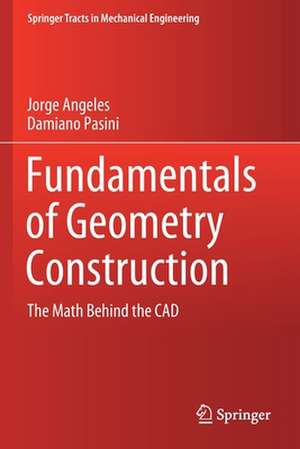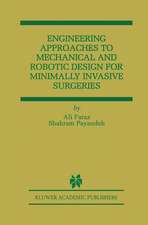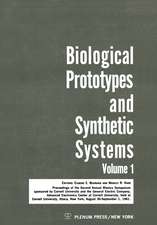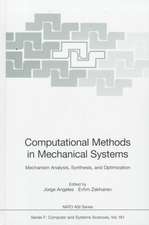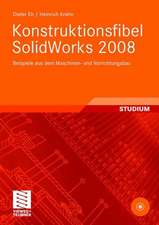Fundamentals of Geometry Construction: The Math Behind the CAD: Springer Tracts in Mechanical Engineering
Autor Jorge Angeles, Damiano Pasinien Limba Engleză Paperback – 18 apr 2021
Chapter 1 summarizes the basic Linear and Vector Algebra pertinent to vectors in 3D, with some novelties: the 2D form of the vector product and the manipulation of “larger" matrices and vectors by means of block-partitioning of larger arrays. In chapter 2 the relations among points, lines and curves in the plane are revised accordingly; the difference between curves representing functions and their geometric counterparts is emphasized. Geometric objects in 3D, namely, points, planes, lines and surfaces are the subject of chapter 3; of the latter, only quadrics are studied, to keep the discussion at an elementary level, but the interested reader is guided to the literature on splines.The concept of affine transformations, at the core of CAD software, is introduced in chapter 4, which includes applications of these transformations to the synthesis of curves and surfaces that would be extremely cumbersome to produce otherwise.
The book, catering to various disciplines such as engineering, graphic design, animation and architecture, is kept discipline-independent, while including examples of interest to the various disciplines. Furthermore, the book can be an invaluable complement to undergraduate lectures on CAD.
| Toate formatele și edițiile | Preț | Express |
|---|---|---|
| Paperback (1) | 381.98 lei 6-8 săpt. | |
| Springer International Publishing – 18 apr 2021 | 381.98 lei 6-8 săpt. | |
| Hardback (1) | 389.31 lei 6-8 săpt. | |
| Springer International Publishing – 18 apr 2020 | 389.31 lei 6-8 săpt. |
Din seria Springer Tracts in Mechanical Engineering
- 18%
 Preț: 1117.03 lei
Preț: 1117.03 lei - 18%
 Preț: 948.16 lei
Preț: 948.16 lei - 18%
 Preț: 787.91 lei
Preț: 787.91 lei - 18%
 Preț: 1004.99 lei
Preț: 1004.99 lei -
 Preț: 419.06 lei
Preț: 419.06 lei - 17%
 Preț: 539.21 lei
Preț: 539.21 lei - 18%
 Preț: 944.19 lei
Preț: 944.19 lei - 15%
 Preț: 669.01 lei
Preț: 669.01 lei - 15%
 Preț: 638.43 lei
Preț: 638.43 lei - 15%
 Preț: 638.89 lei
Preț: 638.89 lei - 15%
 Preț: 639.90 lei
Preț: 639.90 lei - 18%
 Preț: 950.03 lei
Preț: 950.03 lei - 15%
 Preț: 636.30 lei
Preț: 636.30 lei - 18%
 Preț: 1012.84 lei
Preț: 1012.84 lei -
 Preț: 388.72 lei
Preț: 388.72 lei - 18%
 Preț: 1005.74 lei
Preț: 1005.74 lei - 15%
 Preț: 641.85 lei
Preț: 641.85 lei - 18%
 Preț: 896.08 lei
Preț: 896.08 lei - 18%
 Preț: 962.03 lei
Preț: 962.03 lei - 15%
 Preț: 637.46 lei
Preț: 637.46 lei - 15%
 Preț: 637.28 lei
Preț: 637.28 lei - 15%
 Preț: 639.73 lei
Preț: 639.73 lei - 15%
 Preț: 640.71 lei
Preț: 640.71 lei -
 Preț: 398.92 lei
Preț: 398.92 lei - 15%
 Preț: 644.49 lei
Preț: 644.49 lei - 15%
 Preț: 636.12 lei
Preț: 636.12 lei - 15%
 Preț: 699.77 lei
Preț: 699.77 lei - 15%
 Preț: 651.67 lei
Preț: 651.67 lei - 24%
 Preț: 910.50 lei
Preț: 910.50 lei - 15%
 Preț: 647.40 lei
Preț: 647.40 lei - 24%
 Preț: 808.06 lei
Preț: 808.06 lei - 18%
 Preț: 785.86 lei
Preț: 785.86 lei - 15%
 Preț: 647.40 lei
Preț: 647.40 lei - 15%
 Preț: 693.57 lei
Preț: 693.57 lei - 20%
 Preț: 572.40 lei
Preț: 572.40 lei - 15%
 Preț: 695.85 lei
Preț: 695.85 lei -
 Preț: 454.74 lei
Preț: 454.74 lei - 15%
 Preț: 651.19 lei
Preț: 651.19 lei - 18%
 Preț: 730.65 lei
Preț: 730.65 lei
Preț: 381.98 lei
Nou
Puncte Express: 573
Preț estimativ în valută:
73.09€ • 79.64$ • 61.59£
73.09€ • 79.64$ • 61.59£
Carte tipărită la comandă
Livrare economică 23 aprilie-07 mai
Preluare comenzi: 021 569.72.76
Specificații
ISBN-13: 9783030431334
ISBN-10: 3030431339
Pagini: 168
Ilustrații: XX, 168 p. 109 illus., 49 illus. in color.
Dimensiuni: 155 x 235 mm
Greutate: 0.27 kg
Ediția:1st ed. 2020
Editura: Springer International Publishing
Colecția Springer
Seria Springer Tracts in Mechanical Engineering
Locul publicării:Cham, Switzerland
ISBN-10: 3030431339
Pagini: 168
Ilustrații: XX, 168 p. 109 illus., 49 illus. in color.
Dimensiuni: 155 x 235 mm
Greutate: 0.27 kg
Ediția:1st ed. 2020
Editura: Springer International Publishing
Colecția Springer
Seria Springer Tracts in Mechanical Engineering
Locul publicării:Cham, Switzerland
Cuprins
Introduction to Geometry Construction.- 2D Objects.- 3D Objects.- Affine Transformations.
Recenzii
“The book serves as a timely and relevant body of concepts and mathematical fundamentals behind the computer aided design (CAD) technology. … The presentation of the material is formal, precise and convincing. Overall, the book is a useful reference and textbook material to a broad community users of CAD tools who wish to gain underlying mathematical knowledge.” (Witold Pedrycz, zbMATH 1458.51001, 2021)
Notă biografică
Jorge Angeles is professor at the Department of Mechanical Engineering and at the Centre for Intelligent Machines at McGill University, Montreal, Canada.
Textul de pe ultima copertă
The textbook provides both beginner and experienced CAD users with the math behind the CAD. The geometry tools introduced here help the reader exploit commercial CAD software to its fullest extent. In fact, the book enables the reader to go beyond what CAD software packages offer in their menus.
Chapter 1 summarizes the basic Linear and Vector Algebra pertinent to vectors in 3D, with some novelties: the 2D form of the vector product and the manipulation of “larger" matrices and vectors by means of block-partitioning of larger arrays. In chapter 2 the relations among points, lines and curves in the plane are revised accordingly; the difference between curves representing functions and their geometric counterparts is emphasized. Geometric objects in 3D, namely, points, planes, lines and surfaces are the subject of chapter 3; of the latter, only quadrics are studied, to keep the discussion at an elementary level, but the interested reader is guided to the literature on splines.The concept of affine transformations, at the core of CAD software, is introduced in chapter 4, which includes applications of these transformations to the synthesis of curves and surfaces that would be extremely cumbersome to produce otherwise.
The book, catering to various disciplines such as engineering, graphic design, animation and architecture, is kept discipline-independent, while including examples of interest to the various disciplines. Furthermore, the book can be an invaluable complement to undergraduate lectures on CAD.
Chapter 1 summarizes the basic Linear and Vector Algebra pertinent to vectors in 3D, with some novelties: the 2D form of the vector product and the manipulation of “larger" matrices and vectors by means of block-partitioning of larger arrays. In chapter 2 the relations among points, lines and curves in the plane are revised accordingly; the difference between curves representing functions and their geometric counterparts is emphasized. Geometric objects in 3D, namely, points, planes, lines and surfaces are the subject of chapter 3; of the latter, only quadrics are studied, to keep the discussion at an elementary level, but the interested reader is guided to the literature on splines.The concept of affine transformations, at the core of CAD software, is introduced in chapter 4, which includes applications of these transformations to the synthesis of curves and surfaces that would be extremely cumbersome to produce otherwise.
The book, catering to various disciplines such as engineering, graphic design, animation and architecture, is kept discipline-independent, while including examples of interest to the various disciplines. Furthermore, the book can be an invaluable complement to undergraduate lectures on CAD.
Caracteristici
Includes exercises at the end of each chapter Topics and items usually left out in undergraduate math courses are brought into the Provides a few suggested readings for the benefit of instructors and students
